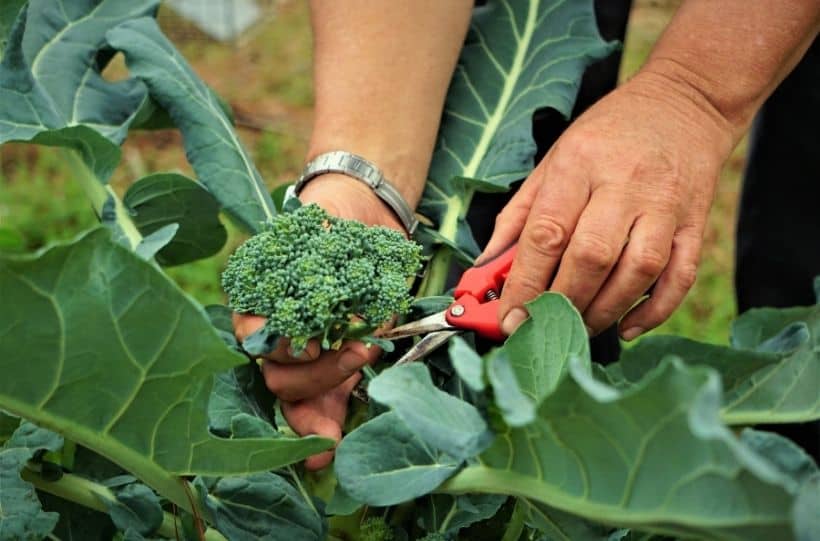7 Top Broccoli Growing Tips to Grow the Best Broccoli
This post may contain affiliate links. Please see the privacy policy for details.
Broccoli is one of the most popular vegetables in the world. It is a nutritious, delicious vegetable that can be harvested and eaten at any time of year.
So if you are looking for some quick tips on growing broccoli, this blog post has 7 helpful pointers to get you started!

#1: Try Different Types of Broccoli
There are many different types of broccoli. The most common is the green, long-stemmed type that we typically see in supermarkets here in the US and Canada.
However, there are also several cultivars with purple or white heads like Calabrese which have a thinner stalk than traditional varieties.
Broccoli will produce for about six months on average before eventually dying off due to cold weather conditions over winter if not harvested first.
#2: Always Plant in a Good Soil Type
The best time to plant broccoli is when soil temperatures are between 40-50 degrees Fahrenheit. The ideal fertility level for growing this type of vegetable should be light and rich with lots of organic matter (i.e., compost).
Avoid planting into heavy clay or clay soils where water doesn’t drain well as these conditions will not produce optimal results. Make sure there’s no competition from weeds during the first few weeks after transplanting, too!
Use two plants per hole spaced at least 18 inches apart, 36 inches apart between rows, and cover seeds with mulch until they germinate if you can’t sow right in the ground.
#3: Ensure Broccoli Gets Enough Sunlight
Broccoli needs a good amount of sunlight to grow well! If you have limited space in your garden, plan accordingly on the location of broccoli plants so that they get as much sun as possible during their growing season.
For example, planting these crops under larger trees may not be ideal because they will receive less direct light than if planted elsewhere.
#4. Fertilizer
Broccoli, like all plants, needs nutrients to grow. If you are planting in soil that is not rich and lacks nutrients, it may be necessary to fertilize with a nitrogen-rich fertilizer.
To prevent any damage to the plant, use an organic or slow-release type of fertilizer when planting this crop. For example, if using phosphorus as your primary nutrient source for growing broccoli plants during the summer months (i.e., high temperatures), apply this only once every four weeks instead of weekly like nitrogenous fertilizers such as manure or bone meal.
#5: Don’t Plant Too Early or You’ll Lose Your Harvest
Broccoli likes cooler weather so it is best to wait until the soil temperature reaches 40-50 degrees Fahrenheit before planting. It is also important to know that broccoli does not tolerate cold temperatures well, which means you must harvest as soon as possible if a frost approaches!
The time period for optimal harvesting will vary depending upon where you live but typically ranges from mid-October through February (depending on climate zones) and should be harvested at least 12 weeks prior to predicted frost dates in order to get the most out of your plant before winter arrives.
#6: Protect Your Plant from Pests and Disease with Natural Fertilizers
Broccoli plants can be vulnerable to pests such as slugs, snails, aphids, and cabbage worms that feed on these leaves which will cause significant damage over time due to their chewing activity.
You may want to invest in a natural nematode control for your garden (i.e., Heterorhabditis bacteriophora) or use insecticidal soaps/horticultural oils if the problem persists–these are more environmentally friendly than pesticides!
#7. Harvesting Your Broccoli
Broccoli can be harvested at any time of year, so make sure to check the calendar for your specific variety! When harvesting broccoli, cut off the head and leave about two inches from where it emerged. This will help encourage more heads to grow back in their place.

Use these 7 broccoli-growing tips for a bountiful harvest. And remember broccoli needs a good amount of sunlight and compost-rich soil, these will help boost your harvest with minimal effort.
And for more vegetable-growing knowledge, be sure to read these next:
